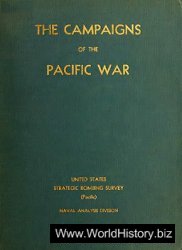Biology and historical linguistics play central roles in the study of Pacific migrations. Echoing early models proposing waves of physically distinct migrants, some biologists remain convinced that the earliest inhabitants of Near Oceania can be sorted into groups with separate origins in Java, China, India, and elsewhere. Others propose a single original colonization by biologically diverse people followed by continual biologically-minor mingling with external source areas, as well as important evolutionary modification owing to gene flow, genetic drift, and adaptation to varying environmental contexts. Skeletal characteristics such as robusticity and gracility, which multiple-origins models identify as crucial markers of separate origins, have been shown by proponents of the singleorigin model to relate to sexual dimorphism and climatic variation. The single-origin model is based on genetic as well as skeletal evidence and accords best with the archaeological record, in which there is no evidence for serial major migrations in the form of sudden appearances of novel items of material culture or new patterns of behavior with demonstrable nonPacific origins.
Linguistics has little to say about the initial colonization and early history of Near Oceania. The languages of the Pacific fall into two classes: Austronesian and non-Austronesian (or Papuan). The 700+ Papuan languages include most of the languages of New Guinea and some on nearby islands to the west as well as to the east as far as New Georgia in the Solomons. They are linked at the highest level only because they are not Austronesian, though several lower-order groupings have been detected. There have been efforts to extract historical patterns from such relationships, but they do not speak with any certainty to questions concerning very early periods. There are suggestions that some languages and groupings may have significant time depth, and that some in the New Guinea highlands may be distantly related to Australian languages. This last contention is supported by biological studies showing that Aboriginal Australians have affinities with Melanesians and particularly highland New Guineans, who were isolated from major biocultural changes that unfolded on the coasts and islands of Melanesia in the Late Holocene (see Oceania: Micronesia; New Guinea and Melanesia).
Austronesian languages were the only pre-European languages in Remote Oceania. Ultimately of Taiwanese descent, they are also spoken almost everywhere in Island Southeast Asia and, in Near Oceania, in some coastal and lowland parts of New Guinea and most of the Bismarcks and main Solomons. All Austronesian languages located east of the Bird’s Head in western New Guinea, including all but the most westerly parts of Micronesia, form a group known as Oceanic. In Melanesia, Oceanic splits into a number of major subgroups. Changes in an ancestral language in one of these subgroups eventually produced the very closely related set of languages that spread through Polynesia. All Micronesian languages except those of the Marianas, Palau, and Yap fall in one subgroup which originated in central Melanesia. Yapese is a complicated case, but seems most closely related to Oceanic Austronesian in the Admiralty Islands in the northern Bismarck Archipelago. The languages of Palau and the Marianas are Austronesian but not Oceanic, being Western Austronesian of Southeast Asian type.
Although the facts and the theory are continually debated, biology backs the broad linguistic picture concerning the colonization of Remote Oceania: the people came from Southeast Asia via Island Melanesia, where they mingled with existing populations before continuing to the east. Because the indigenous people of Remote Oceania share certain distinctive biological markers and all speak Oceanic, it is generally accepted that their ancestors brought Austronesian languages with them, in the well-described form of Proto-Oceanic. Linguistics and biology agree that these colonists largely avoided mainland New Guinea, though both disciplines have detected traces of a pre-Oceanic Austronesian incursion along the north coast from the west. It now also seems likely that they leapfrogged the main Solomons chain. There is growing biological evidence for sex-based differences in these patterns of dispersal. The distribution of male (Y) chromosome markers reveals a complex pattern of interrelationships between Southeast Asia, Melanesia, and Polynesia, but the female genetics (mitochondrial DNA), like the linguistics, indicates a swift and homogenous Austronesian dispersal. The archaeological witness to this spread is the Lapita cultural complex, described below.




 World History
World History









